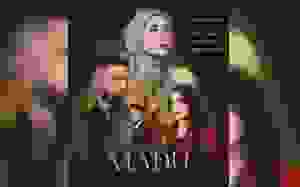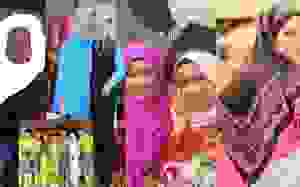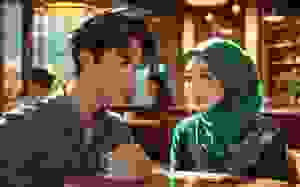Bridging The Racial Divide Through Our Children
Where are the seeds of prejudice first planted? In our children. That’s according to numerous child development studies.
A well-known study was Jane Elliott’s “blue-eyed brown-eyed” role play with children in 1968 in Iowa, soon after Martin Luther King Jr was assassinated in Memphis, Tennessee.
Elliott’s experiment showed that American school children were at that time raised in an environment of racial segregation. They were socialised to think that Blacks were born to serve and Whites to be served. Some to rule, others to be ruled.
That was how Hitler Youths were indoctrinated with the ideology of Aryan supremacy, and Afrikaner children, insulated from decades of injustices against Black South Africans, formed their prejudices through the apartheid that ended in 1993.
In our case, Malay and non-Malay children are raised to live with, or prosper, under a “special bumiputera rights and privileges” system of governance.
Our struggles against systemic and structural racism, however, are not unique. Many Asian countries, too, grapple with the consequences of “racial othering”.

A 2023 World Values Survey showed that countries perceived to be least racially tolerant are mainly from the Middle East, Africa, and Asia.
In our case, 31.3 percent of Malaysians prefer “no foreign neighbours” and 34.4 percent have themselves seen and experienced racism. Less than half of Malaysians are intolerant, but we are, nonetheless, guilty of discrimination by race and religion.
Malaysia has yet to sign or ratify the International Convention on the Elimination of All Forms of Racial Discrimination (Icerd) due to outright opposition from the Malay community.
In terms of “racial equality rankings” (out of a total score of 87) Malaysia is at 48th compared to Singapore (19th), Australia (12th), and New Zealand (1st).
Formative years
This raises these questions: What now? What if the seeds of racial acceptance are planted early in our children’s formative years? What if children are exposed to different racial experiences in schools, in the family, and in the wider community?
What if our system of governance is based on social and cultural integration rather than communal segregation, for instance, in the absurd notion of restricting Muslim participation in non-Muslim celebrations? For now, the government has shelved the suggestion – until the Islamists re-fire the issue.

It is said that we are products of our past. But some are still confined to the old ways, resistant to change. Hence, the mixed bag of racist politicians we have today.
Yes, we are products of our past. I grew up with Malay, Indian, and Eurasian friends in Penang. We played guli (marbles) and gasing (tops) amid the attap houses on stilts. My alarm clock was the muezzin’s call to prayer. Race and religion did not matter - until the riots in May 1969 when we began to see things through the eyes of fearful adults.
Photo albums of my adolescent years showed I had few non-Chinese friends. Today, my contact list shows names that are as ethnic as they are Malaysian and “Australian”.
My son and daughter raised in Australia as “adult third culture kids” with annual balik kampung holidays have married across racial lines. Interracial engagements in my extended family do foster shared experiences. Family gatherings are flavoured with different food, languages, values, and traditions.
My grandchildren will embrace their mixed heritage, and I hope, perceive others by the “content of their character” and not by the “colour of their skin”.
It is more than likely that they will grow up with blended identities, and bear less prejudice toward different cultural groups they meet. They will learn about diversity, live it, and understand the nuances of different traditions.
Interracial marriages
Interracial marriages – and the children of mixed heritage – are potential bridge builders. But they are rare in Malaysia. In 2018, only nine percent of marriages were between different races, compared to 22 percent in Singapore.
The main barrier to interracial marriages is the compulsory conversion to Islam when a non-Malay marries a Malay. Second is our history of categorising Malaysians by race and religion, which in turn have shaped our expectations and interpretation of government racial policies.
The consequence? We are more divided today than during my adolescent years in Penang. It shows in the words we unthinkingly use to label other groups. It shows in our side glances. It reveals our hidden, yet telling racial attitudes.
Subtle prejudices - like jokes, stares, and political slogans - still exist. (I came across graffiti on a wall at Taman Eco Rimba, Kuala Lumpur last December. It referred to the May 13 incident and the Chinese.)
Yes, nationalist politicians, the Islamists, the sloganeers – they will continue to fuel racial division.
However, the onus lies on ordinary Malaysians to re-connect across racial lines and, in some cases, to form authentic friendships that lead to interracial marriages.
Their mixed heritage children may just be the model Malaysians we need to finally bridge the racial divides. - Mkini
ERIC LOO is a former journalist and educator in Australia and a journalism trainer in parts of Asia.
The views expressed here are those of the author/contributor and do not necessarily represent the views of MMKtT.
Artikel ini hanyalah simpanan cache dari url asal penulis yang berkebarangkalian sudah terlalu lama atau sudah dibuang :
http://malaysiansmustknowthetruth.blogspot.com/2025/02/a_53.html
 PING BABAB : Raksasa Aggregator Malaysia
PING BABAB : Raksasa Aggregator Malaysia
 A 2023 World Values Survey showed that countries perceived to be least racially tolerant are mainly from the Middle East, Africa, and Asia.
A 2023 World Values Survey showed that countries perceived to be least racially tolerant are mainly from the Middle East, Africa, and Asia. It is said that we are products of our past. But some are still confined to the old ways, resistant to change. Hence, the mixed bag of racist politicians we have today.
It is said that we are products of our past. But some are still confined to the old ways, resistant to change. Hence, the mixed bag of racist politicians we have today.

























